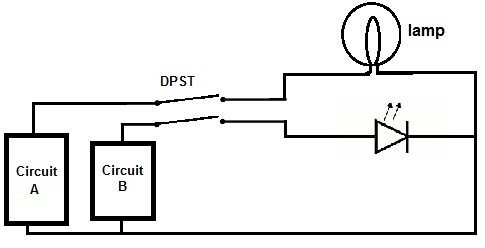The difference between a single and double pole switch is that the latter controls two circuits at the same time. Like the single pole switch a double pole switch has onoff markings and controls a device or equipment from one location.

Savage Switches Double Pole Vs Single Pole Electrics
Single pole switch vs double pole. The voltage from either leg to the neutral line is 120 volts but across the two hot legs is 240 volts which is double the 120 volt supply. This terminology applies to toggle switches rocker switches and push button switches. The main difference is that a double pole switch has four hot brass terminals instead of two plus a ground terminal. It has four terminals. Two for incoming hots and two for outgoing hots. Double pole thermostats a single pole thermostat opens the circuit by cutting current through one or the other of the hot wires.
What is a double pole switch. Provide 120 volts 15 20 amps and have one hot wire and one neutral wire. A double pole switch is what you need to control a 240 volt device because 240 volt circuits have two hot wires. Since the power is off someone might try working on the heater and get electrocuted by connecting any part of the circuit to ground. Let us show you the difference. Well single pole breakers and double pole breakers differ in the voltage and amperage they provide as well as how they are wired.
Flat plate grid plates and switches. Its there so the electrician can connect the switch to another three way switch via a third wire. Capable of controlling two circuits simultaneously. Double pole thermostats open both hot wires. Traditional plate grid plate and switches. Has two terminals for spst single pole single throw or three for spdt single pole double throw has four terminals for dpst double pole single throw or six for dpdt double pole double throw controls a single circuit.
What is a single pole switch. In addition the three way switch has a black terminal. A three way switch has the same two brass terminals you find on a single pole switch although they are usually opposite each other instead of arranged vertically on the switch body. This allows the user to connect it to two pairs of hot wires from a 240 volt circuit.

















